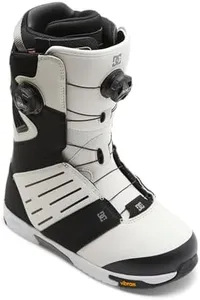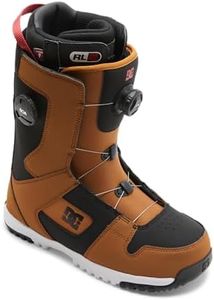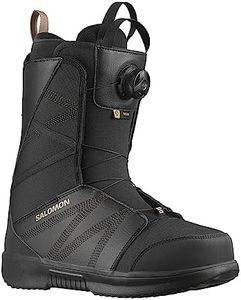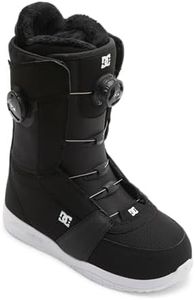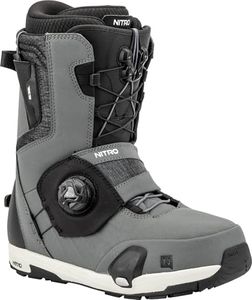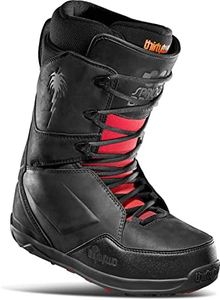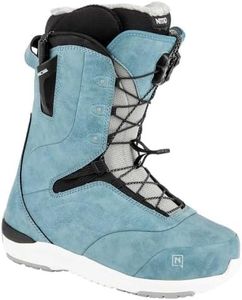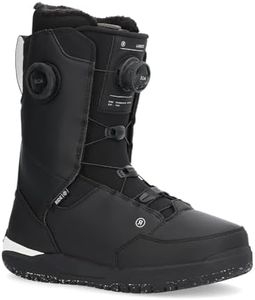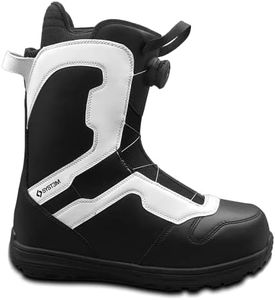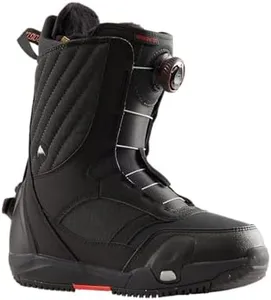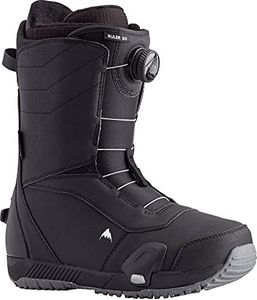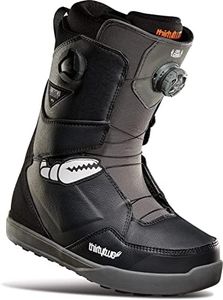We Use CookiesWe use cookies to enhance the security, performance,
functionality and for analytical and promotional activities. By continuing to browse this site you
are agreeing to our privacy policy
10 Best Snowboard Boots
From leading brands and best sellers available on the web.Buying Guide for the Best Snowboard Boots
Choosing the right snowboard boots is crucial for both comfort and performance on the mountain. The best boots for you will fit your foot snugly, match your riding style, and keep you warm and dry. It's important to think about how you plan to ride, how much support you need, and which features make snowboarding more comfortable and enjoyable for you.FlexFlex refers to how stiff or soft the boots feel when you bend them. It's an important spec because it directly affects your control and comfort on the board. A softer flex is more forgiving and comfortable, making it great for beginners or riders who like freestyle tricks and park riding. Mid flex boots offer a balance of support and flexibility, suitable for all-mountain riding and those who want versatility. Stiffer boots provide maximum support and response, which is ideal for advanced riders and those who enjoy riding fast or in challenging terrain. To pick the right flex, consider your skill level and the type of snowboarding you want to do most often.
Lacing SystemThe lacing system is how you tighten and secure your boots. This matters because it affects how easy it is to put on the boots and make adjustments for a snug fit. Traditional laces allow for the most customizable fit but take longer to tie and adjust. Quick-pull (speed laces) systems are faster to tighten and make it easy to adjust different zones, while BOA systems use dials for super easy and quick tightening, often even with gloves on. Think about how much time you want to spend getting ready and how important on-the-go adjustments are to you when choosing a lacing system.
Fit and ComfortFit and comfort are all about making sure the boot hugs your foot securely without pressure points or pain. Good fit prevents blisters, keeps your feet warm, and helps you control your board better. Most boots come in standard shoe sizes, but the inner liner and overall shape can feel different from brand to brand. Narrow, medium, and wide fits are available, so it's crucial to try boots on or check size guides carefully. Consider the shape of your foot and always prioritize comfort over looks, making sure your toes aren't crunched and your heel doesn't lift inside the boot.
Liner TypeThe liner is the soft, cushioned inner part of the boot that surrounds your foot. It's important because it provides warmth, support, and influences how the boot fits after being worn for a while. Some liners are heat-moldable, meaning they can be custom-fitted to your foot for extra comfort, while others break in naturally over time. Non-moldable liners are comfortable but may not provide the same personalized feel. Think about whether you want a custom fit right away or are happy for the boot to mold to your foot gradually.
Boot SoleThe sole of the boot affects both grip and cushioning. A good sole gives you traction while walking on snow or ice and can absorb shocks when landing jumps or just moving around. Thicker, more cushioned soles work well for freestyle and park riders who want soft landings, while lighter, grippier soles suit those who walk or hike a lot in their boots. Consider where you'll be snowboarding and whether you value comfort walking off your board as much as you do while riding.
